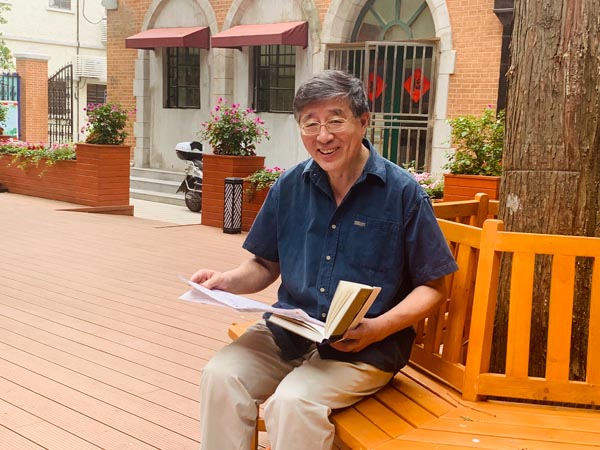 |
|
"I'm happy to see that the renovation efforts have restored the old homes. Those who used to live here were amazed at the scene when they returned," said Huo Bai, a resident of Qishan neighborhood. [PHOTO BY GAO ERQIANG/CHINA DAILY] |
According to its 13th Five-Year Plan, Shanghai is aiming to renovate all the old residential buildings in its downtown alleys by 2020. Zhou Jianliang, an official from the renovation office under the Shanghai Municipal House Administration Bureau, says that the city has completed renovating most of the buildings in these areas, covering an area of 2.4 million square meters.
Zhang adds that his work, however, is far from over. What is left now are the most challenging homes to restore.
"Although the living conditions in the alleys are now much better than what it used to be in the 1980s, they still lag far behind the level of the new housing estates in Shanghai. Deep-rooted problems such as the large number of termites and overcrowded living spaces still need to be solved," Zhang says.
"The per capita living space in the old alleys is only 10.81 square meters, compared with the city average of 30 square meters. Many residents still have to share bathrooms and kitchens with others."
Official statistics show that about 178,000 families in Shanghai still have no toilets at home and have to share a public one with their neighbors. Moreover, the life span of these old buildings is also nearing its limit, making the restoration and follow-up maintenance even more challenging, Zhang says.
Zhou agrees. He says the requirements for each renewal project is different as each community poses different challenges.
"There isn't a single solution that fits every community. We have had to experiment with various innovative ways to carry out historic preservation and urban renewal," he says.
Zhang elaborates on this, saying that it is imperative that a thorough investigation into the condition of the buildings and alleys is carried out before renovation work can commence.
To improve the efficiency of the renewal work, the city has been working to set up clear guidelines that can be applied to every project.
"It is currently difficult to determine a standard blueprint for the renovation process as the situations in different alleys and neighborhoods vary. However, there are some basic principles regarding what can and cannot be done," he explains.
"Based on these principles, we can explore specific methods of renewal according to the characteristics of each neighborhood. In fact, we could even consider allowing residents to renovate their communities themselves based on these guidelines. This would allow us to introduce a sense of social power into the preservation efforts."
Tang Xiaofan and Wang Junlin contributed to this story.